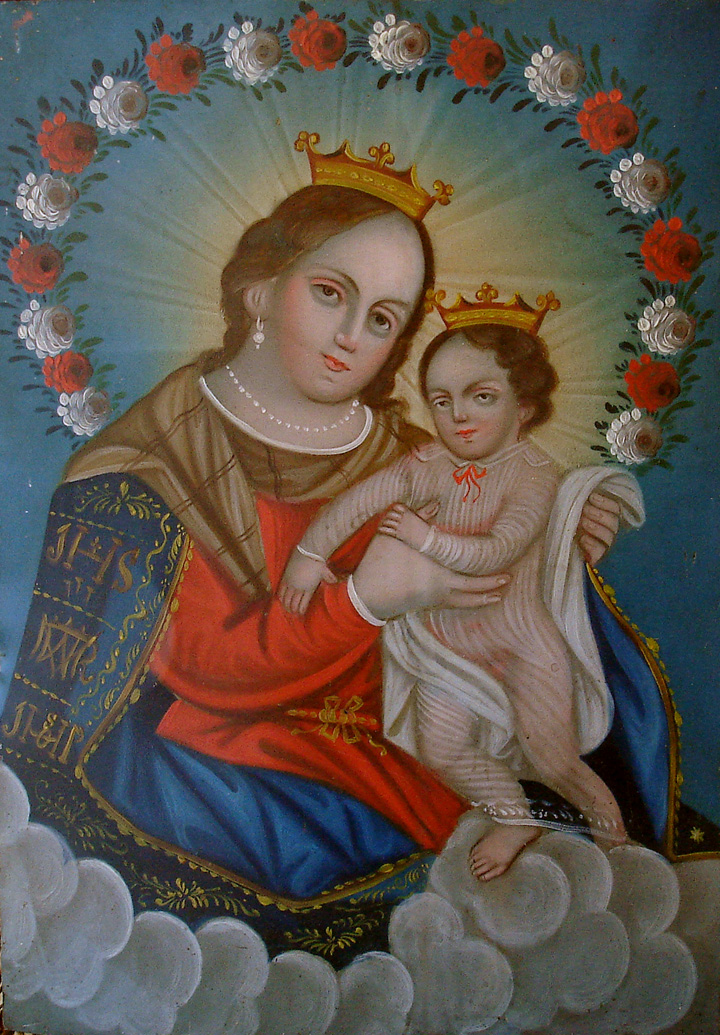Retablos are oil paintings that form a unique art form based on devotional iconography inspired by the time-honored Catholic Church art. Mexican antique retablos, also called ‘laminas’, portray creative artistry on wood, tin and copper surfaces. Read our guide for more facts and information…
Mexican retablos were created by folk artists since the early 1800s. They were bespoken by individuals or bought from artists to complement the home altar. These elaborate paintings were mainly produced in the three Mexican cities namely, Guadalajara, Guanajuato and Zacatecas. Though the productivity was at its peak during the later half of the nineteenth century, the tradition ceased to flourish at the close of the century.
The meaning and evolution of retablos
Retablo, a Spanish word, is a derivative of the Latin word ‘retro-tabulum’, which means ‘behind the table.’ It refers to the background screens found behind the church altars during the European medieval period. The altar screens of colonial Mexican churches were decorated with wood carvings, sculptures and paintings. As a result, the word ‘retablo’ emerged to describe the paintings on materials, such as wood or canvas. Copper was used to make retablos in the 1700s, but tin became prevalent towards the close of the eighteenth century. Retablos produced on tin were called laminas after tin sheets took the place of copper and canvas.
The characteristics of antique retablos
Antique retablos depict an ornate painting style, and folk artists have used dramatic poses to impart religious sentiments in a unique way. The purpose of the image was to incite devotional thoughts. A notable characteristic is that the images kindle a sense of piety and portray the naturalness of artists who actually lacked training or underwent minimal training. The color range is limited to red, blue, dark yellow and skin tone, though deep green was used sporadically. Some retablos have an under-painting over the tin surface causing the formation of better shadows and warmer images. With the passage of time, the worn out layers, along with stains caused by aging, render a solemn appearance.
Ex-votos and their purpose
Ex-votos are equivalent to retablos, but refer to devotional paintings that were created to offer thanks or express gratitude to a favorite saint for help received. Usually, the person who is grateful for the miracle dedicates an ex-voto with a testimonial to the patron Saint. They are placed in a chapel and serve as a testimony to visitors, displaying the power of a particular saint. The hand-painted image on tin or copper depicts a unique religious art work.
The iconography used on antique retablos was inspired by etchings, engravings, church sculptures and paintings from earlier centuries. The popular icons pertain to the events from the life of Jesus, the Virgin Mary, as well as the saints.





